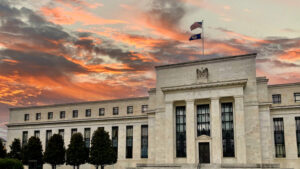Fed President Worries the Fed Risks a Repeat of the 1970s!
The comments below are an edited and abridged synopsis of an article by Mike Gleason
Gold and silver markets have drifted lower as investors braced for additional Fed rate hikes.
Policymakers at the Fed have agreed on the need for additional increases in interest rates. They settled on just a 0.25% bump up at their last meeting. Some dissenters called for a larger 0.5% hike.
Since the Fed’s last move, incoming economic data is emboldening the hawks. A superficially strong US jobs report combined with stubbornly high inflation readings suggest central bankers have more work to do.
Fed Chair Jay Powell has said that disinflation is taking hold. But inflation indicators have shown the opposite, that price levels continue to come in high and continue to exceed most forecasts.
St. Louis Fed President James Bullard says monetary policy is not yet sufficiently restrictive. And recently, he warned that if the Fed is too soft on inflation, we risk a repeat of the 1970s, a difficult decade for investors.
Precious metals were the standout asset class of the 1970s, culminating in a manic run to record highs in gold and silver in January 1980.
We aren’t yet seeing that kind of outperformance take shape. Although demand for physical bullion remain strong, there is little speculative interest on the long side manifesting in futures markets or exchange-traded funds.
Metals markets are entering oversold territory and may be due for a technical bounce in the near future. Whether that develops into a more sustainable breakout will depend on whether the Fed winds down its rate-hiking campaign.
For now, gold and silver bulls will view any bad news on the economy as good news.
On the sound money front, both houses of the Mississippi legislature have voted overwhelmingly to exempt physical gold, silver, platinum and palladium coins and bullion from state sales taxes. The bill awaits the signature of Republican Governor Tate Reeves.


